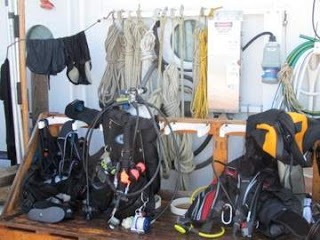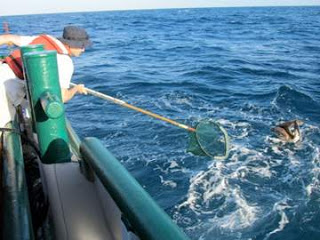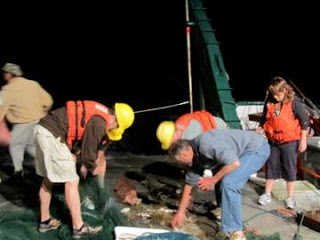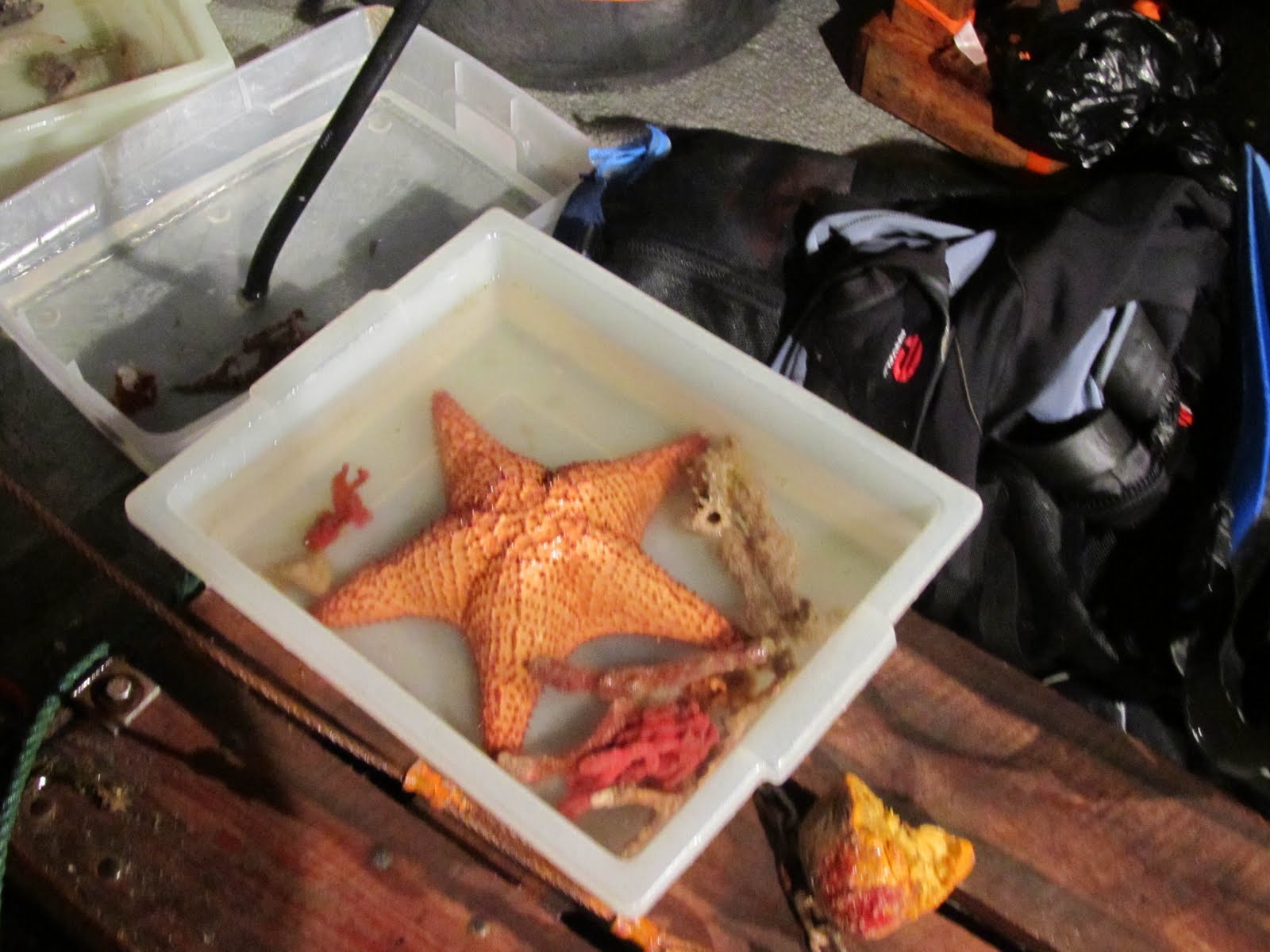From March 4th through the 14th several representatives from the FLMNH, along with scientists from many other institutions, will be sailing the high seas on the R/V Weatherbird II of the Florida Institute of Oceanography. And by “high seas” I mean the Gulf of Mexico off the coast of Florida. We’ve been doing a lot of diving, but since I’m one of the divers (and therefore not wielding my camera) I hope you enjoy this picture of our dive gear.

We have had several dives a day for collecting. So far, they have usually been around 40-60 feet, with the temperature hovering around 64 degrees. Please take a minute to let that last number sink in. That’s 64 degrees Fahrenheit. But while some of us are diving, others on the surface claim that they are actually too warm. I find that hard to believe, but Rob, the collections manager of the fish range at the museum is seen here wearing short sleeves while he tries to net a pelican.

Ok, so Rob is not actually trying to net the pelican, he’s after floating clumps of sargassum and the fish hidden within. The pelican is probably after the same thing. In addition to the fish team composed of Rob and the pelican, we also have a sponge team, an amphipod soloist, a bryozoan soloist, and Nat, Jenna, Gustav, and I on general invert duty. There are 12 of us in total so that means a lot of specimens to sort and process back in the lab and a lot of data to keep track of.

So you’d better believe that at the end of the day we are ready for some hard-earned rest. Here’s a picture of us at night.

I’m sorry, did I say rest? I meant trawl. The trawl was missing a part the first night, but we managed to get a few in tonight, and I have no doubt that we’ll be making up for lost time. The trawl brings up a variety of fish as well as inverts, including the biggest sea star I have ever seen!

We’ve only just begun. I’ll keep you posted!
🙂 Mandy
Yeah!!! Sounds awesome. What a cool experience. Love the photos. Where in the Gulf are you guys?
Love, Mom